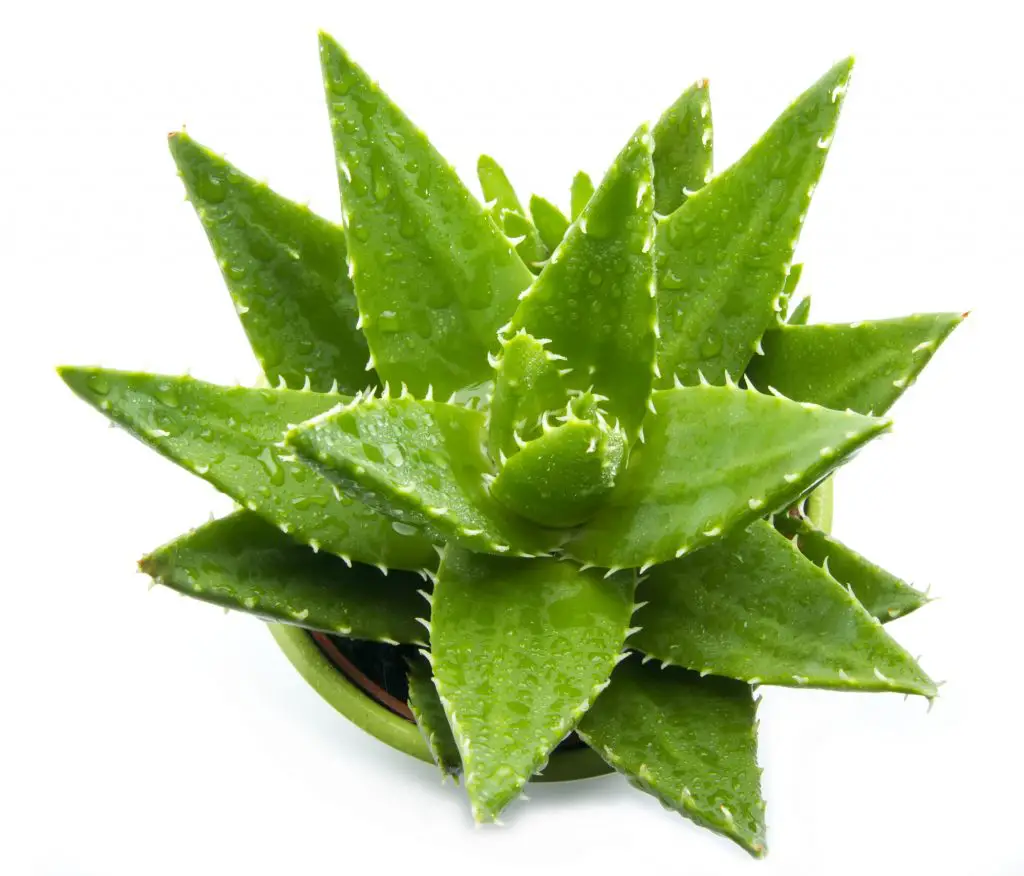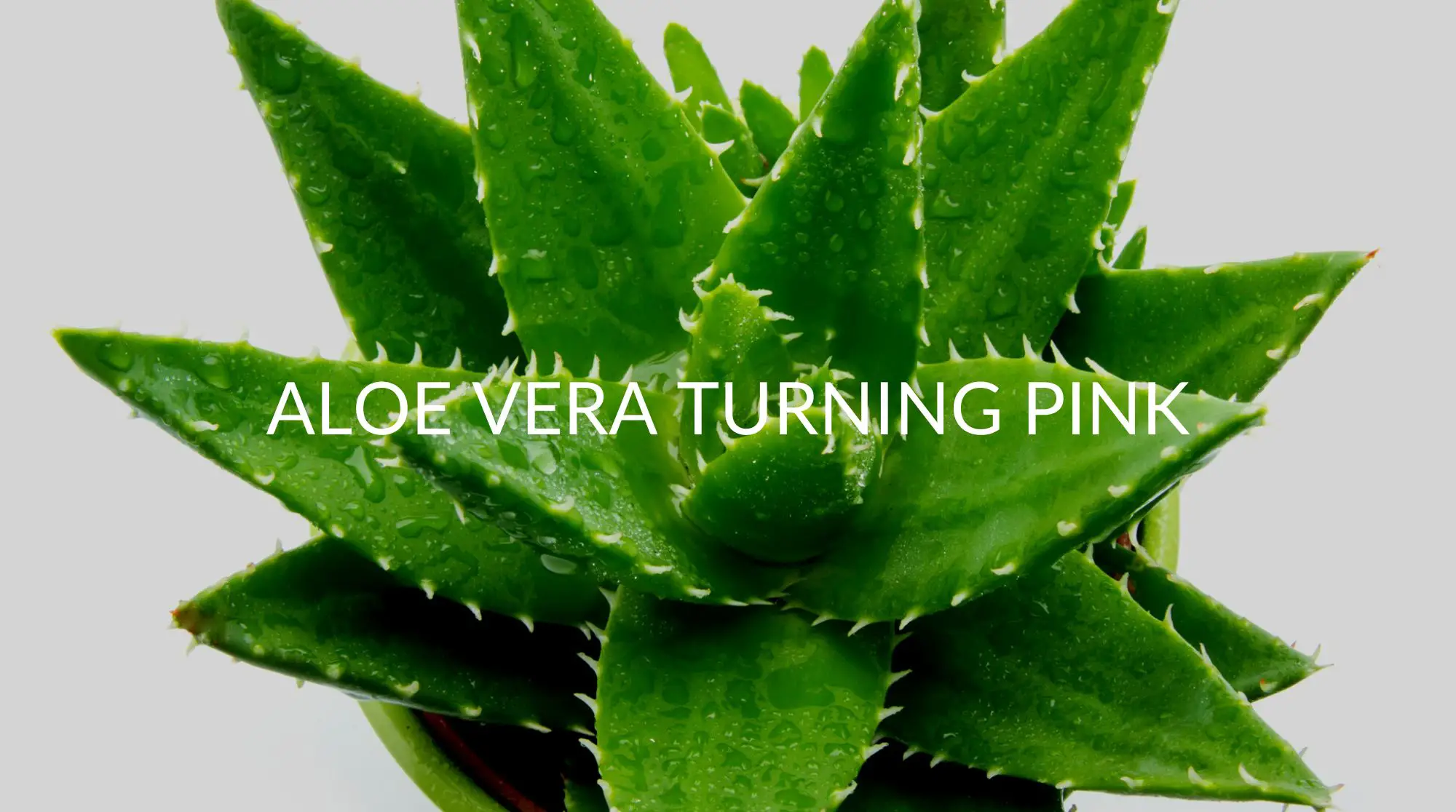The primary reason Aloe Vera leaves turn pink is that the plant is overexposed to direct sunlight. Other reasons may include shock, inadequate drainage, cold temperatures, or underwatering.
We all know how striking Aloe Vera can look when it is a healthy emerald green and full of Aloe gel just waiting to help soothe our latest cuts, scraps, rashes, and sunburns.
While Aloe is not a picky plant and typically thrives in a variety of conditions, you may notice that your Aloe has pink leaves at times. You may even notice some reddish tint at the edges of your leaves as well. What happened to your vibrant green succulent?
If your Aloe is trying to tell you something, you will have to try out a few solutions and find the answer. The quicker you do this, the better. Aloe that grows in poor conditions for a long time may be harder to revive.
Read on for more information on why Aloe Vera turns pink and how to make your Aloe green again.
Is It Normal For Aloe Vera To Turn Pink?
It is normal for succulents like Aloe to change color depending on the conditions of their environments.
While healthy Aloe leaves are typically green, often Aloe that is grown in very bright, direct sunlight for long periods may start to turn pink. This is a natural reaction to being in too much sun.
In some cases, your Aloe may adjust to the hot sun, though its leaves may still look washed out or pale green. Many Aloe will survive over the summer months in bright sun, even if they are turning pink, and will return to their normal color in the fall when the sun isn’t as intense (assuming this is the case where you live).
In other cases, your Aloe is telling you that it needs to be placed in different conditions in order to survive. Most likely, you will need to move your Aloe out of the direct sun for part of the day.

Why Is My Aloe Vera Turning Pink?
Too Much Sun
The primary reason for Aloe leaves going pink is too much sun. Believe it or not, plants used to treat sunburn may get sunburned themselves! Many succulent plants cannot tolerate long hours of hot sun and will, in fact, get sunburn on their leaves.
If your Aloe is sitting in intense sun for several hours of the day, or if it has been recently moved to a sunnier spot, this could be the reason for your pink Aloe leaves.
Underwatering
It is somewhat difficult to underwater an Aloe since it is a succulent plant that grows in desert-like conditions. Generally, the problem with Aloe tends to be overwatering rather than underwatering.
However, if you notice that the tips of your plant are discolored or turning brown, red, or pink, this may be a sign of underwatering.
Underwatering can be the result of a lack of proper care, but it can also be due to compacted soil that does not allow the roots to absorb adequate water and nutrients. Soil can become compacted easily if you let your plants go bone dry between waterings.
Poor Soil Conditions
Compacted soil can be the result of underwatering, but it can also occur if you aren’t growing your succulents in the right type of soil.
Succulents like Aloe Vera need to be grown in gritty, coarse soil. These are desert plants, so think desert sand. Aloe can’t tolerate sitting in water, so the soil needs to be able to drain off most of the excess water.
However, it also needs to be able to retain enough water so that the roots can get what they need. Remember, you are watering infrequently, so the Aloe needs to absorb as much as it can when it is watered.
Inadequate Drainage
In addition to soil, having the right pot is important to ensure you have adequate drainage. Make sure your pot has a least one drainage hole, and the plant is never sitting in water. Do not water your Aloe from a dish.
Pots made from terracotta are better than those of metal, plastic, or glass since terracotta lets water evaporate more readily. Glazed pots look lovely but may not breathe very well. If you are growing your plant in one of these pots, make sure your soil is very gritty and has good drainage.
Shock
If you have moved your Aloe Vera to a new location recently or repotted it into a new pot of fresh soil, your plant may be in shock.
If you just got your Aloe and it has started to develop red or pink edges or leaves, this may be due to shock as well (but check and make sure that any new Aloe is planted in soil with lots of drainage).
It may take a couple of weeks for the Aloe to get over the stress and get used to its new conditions.
If you did move your plant, make sure it is away from heat or drafts and is not in full direct sun for very long periods.
Cold Temperatures
While sunburn is more likely to cause a pink hue on Aloe leaves, it may also be the result of the Aloe being kept in temperatures that are too cold. Aloe does best in temperatures between 55 and 85 ℉.
If your plant is outdoors during the spring or fall, make sure nighttime temperatures are not falling much below this range. This could be very hard on your plant, especially if it is in direct sun the rest of the day.
Your Aloe also may not tolerate being next to a drafty door or window.
Over Fertilizing
If your Aloe hasn’t been repotted in a very long time (or ever), you may have fertilizer or salt buildup in your soil. You may even notice salt deposits on the top of the soil.
Aloe is sensitive to salt and chemicals, which can cause discoloration of the leaves.
How To Fix A Pink Aloe Vera
Find the Right Location
If your plant is in direct sun for several hours and is turning pink or red, the sun is probably the reason. If your plant is left in these conditions, more and more leaves will probably turn pink or red.
Consider moving it to a spot with bright, indirect light, or find a place that has a partial shade for part of the day. Many gardeners recommend that succulents like Aloe get around six hours of bright sun a day.
You may need to invest in a plant stand to keep your Aloe a little farther away from a sunny window if it can’t tolerate the sun.
Watch your Aloe’s location during the course of the day, if possible, and try to determine if there is a place you can leave it that will receive only a short amount of direct sun.
Keep in mind that when you move your plant, it may experience some degree of shock. You may notice that the pink or red leaves continue for a few weeks, or you may even notice brown spots. This should go away if other conditions are good.
Also, remember that if you move your plant, you may have to adjust your watering routine for the new location.
Consider Grow Lights
If you can’t find a place that has bright, indirect light instead of full sun, you may want to bring your Aloe indoors and place it in a low-light spot, but supplement with grow lights. Grow lights may also help your plant adjust to summer sunshine after a long winter of low light indoors.
Since succulents require so much bright light, many gardeners grow all types of varieties with grow lights, even in a private home.
Water Thoroughly and Correctly
If you haven’t been watering your Aloe regularly or letting the soil go completely dry between waterings, then your soil may have become compacted. You will know this is the case because water will not penetrate the soil but will instead pool on top or just run down the sides of the soil mass and out the drainage holes.
If this is the case, the roots of your plant aren’t receiving any water.
If your soil is compacted, water thoroughly until water begins to penetrate the soil. You can also put your plant in a bucket or the kitchen sink and soak it, but don’t let it sit in water for too long. Make sure you have adequate drainage so the excess water can flow out of the drainage holes.
You can’t really water Aloe on a schedule; it is better to water whenever you notice that the top three-quarters of the soil is dry.
Make sure your Aloe is never sitting in a dish of water, as this will waterlog the roots and cause root rot.
Repot in Succulent Soil
Remember that Aloe and other succulents and cactus need to have soil that is grainy and has excellent drainage and aeration. If your plant is growing in regular potting soil, it may not be getting adequate drainage.
You can buy premixed succulent or cactus soil at many gardening centers or big box stores. You can also make your own with a combination of potting soil, coarse sand, gravel, aquarium pebbles, lava rock, pumice, or perlite.
Succulent soil is made from around one part of potting soil to two parts of inorganic (mineral) materials.
Flush Salt and Chemicals Out of Soil
If you see salt deposits on top of your soil, or you think your soil may not be healthy, you can flush the soil with water several times to wash out any excess salt.
You may also want to add some extra mineral material like perlite or coarse sand.
You could also repot your plant in fresh soil, just to be sure that you aren’t exposing your Aloe to chemicals and nutrients that it can’t tolerate.
Aloe doesn’t require much fertilizer, though it does like occasional fertilizing (monthly or so) in the summer. Don’t fertilize in the winter when the plant is dormant.
Will Pink Aloe Vera Leaves Turn Green Again?
Yes, pink Aloe leaves will go back to their natural green color when the environmental conditions have changed, though it may take a little while. If you have pink Aloe leaves, make sure to try one of these strategies right away. The longer you wait, the less likely the plant will continue to flourish.
If you notice that your leaves are turning brown or developing mushy spots, these leaves may be too damaged to turn back to green. If you have many healthy green leaves still on your plant, don’t worry too much about it.
Make sure you are watering your Aloe correctly and that the roots are healthy and aren’t brown or rotting. If your Aloe is in good conditions to thrive, its leaves will go back to their green hue.
FAQ
Is Aloe Vera Safe for Use After it Turns Pink?
Yes. Pink Aloe leaves should not affect the quality of the Aloe Vera gel inside the leaf. If a plant is not growing in healthy conditions, however, it may produce less gel than a healthier plant.
Sometimes Aloe Vera gel has a pink or red tint to it, which should be normal. If you notice that Aloe gel has an unpleasant odor, then it is not safe for use.
Recap
While it is not uncommon for Aloe Leaves to turn pink or red, it is probably a sign that something in your plant’s environment needs to change.
Most likely, the problem will be solved if you reduce the plant’s exposure to direct sun. More than a few hours of direct sun a day may be too much for many Aloes. The plant does need around six hours of bright, indirect sunlight, though.
Don’t panic if your Aloe turns pink. If you try to figure out the solution, a healthy plant will turn green again.








